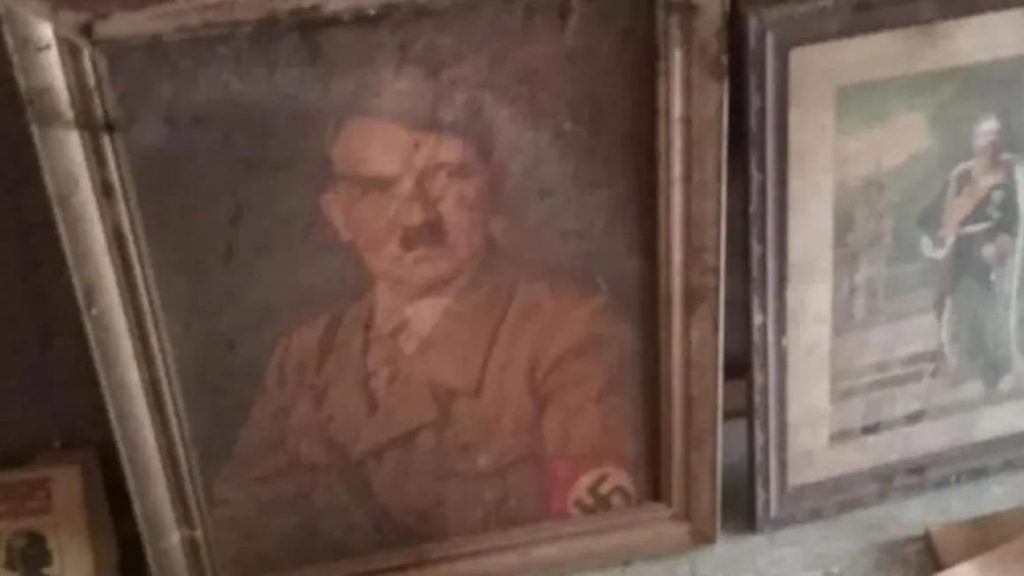Talk about experiencing a real-life history lesson…
Sebastian Yurtseven, a local history teacher from Hagen, Germany, was cleaning up his aunt’s house when he accidentally found a secret cache of Nazi artifacts hidden behind a wall. He had removed a piece of plasterboard after it had gotten loose from the rain and found a hole in the wall behind it. After investigating further, he found a newspaper from 1945 and several other objects including Nazi Party medals, a revolver, brass knuckles, gas masks, documents, and even a portrait of Adolf Hitler. Yurtseven commented while telling a German news outlet, Westfalenpost, “I got goosebumps. I didn’t think it would turn into such a huge discovery.” Yurtseven’s family bought the house in the 1960s and had no idea what they were getting into…
Whoever hid the Nazi-era artifacts seem to have done it hurriedly in the last days of the Third Reich in the narrow shaft when the American troops marched in so they wouldn’t be arrested for being Nazis. After further research, it was discovered that the house once served as a local office of the Natioanlsozialistische Volkswohlfahrt or NSV which was a national welfare organization run by Nazis. The official name of the party was Nationalsozialistische Deutsche Arbeiterpartei, or NSDAP. “This finding is historically and scientifically significant,” commented Andreas Korthals, an archivist at Stadtarchiv Hagen, an agency of the North Rhine-Westphalia state government. There is very little information known about the German socialist party apart from the fact that it extended its “national community” support work during the 1930s and World War II.
The different weapons such as the revolvers and brass knuckles were likely used by Nazi Stormtroopers in street battles against the communists and the portrait of Hitler might have been displayed on the wall at the office to show respect to their leader. All the objects and literature would be indexed in the archives and made available for research, while some artifacts will be displayed in a museum soon.

